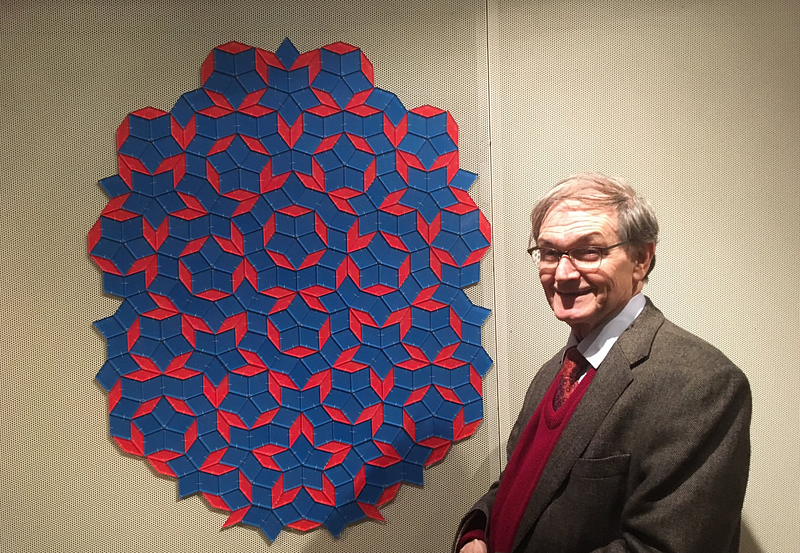# The Hidden Order: Penrose Tiling and Its Implications on Life
Written on
Chapter 1: The Fascinating World of Penrose Tiling
What if I told you that the elaborate design of a simple set of tiles could be the key to unraveling the enigmas of existence and the cosmos? It sounds unbelievable, doesn’t it? However, by the end of this exploration, you may begin to see things differently.
Deciphering the Mysteries of Penrose Tiling
In the 1970s, the acclaimed physicist and Nobel Laureate, Roger Penrose, made a groundbreaking contribution to mathematics with his discovery of Penrose tiling. By utilizing just two distinct tile shapes, he crafted a pattern that can extend infinitely in all directions without ever repeating—much like pi, which has a non-repeating decimal that continues indefinitely. This mathematical characteristic is referred to as aperiodicity.

In 2007, nearly four decades after Penrose's revelation, physicist Peter Lu made a remarkable discovery. He found an example of Penrose tiling in the centuries-old Ulugh Beg Madrasa in Uzbekistan, demonstrating that this pattern had been recognized 500 years prior to Penrose's formal identification.

This finding raises questions: Why did this ancient civilization choose to adorn their sacred spaces with a pattern that would later be recognized as significant in modern mathematics?
Life, Aperiodicity, and the Quest for Order
When contemplating art and architecture, we often view them merely as aesthetic pursuits. However, they encapsulate a civilization's worldview and understanding of existence. Much like life itself, Penrose tiling captures an intricate and ever-evolving complexity.
The universe, with its vastness and intricate social structures, may seem chaotic when observed from afar. Yet, beneath that complexity lies an underlying simplicity, akin to how Penrose tiling starts with two shapes and expands into a myriad of aperiodic forms.
In life, every event and decision can influence the future in ways we might not foresee. Yet, all of it originates from a basic fundamental unity—an order that emerges from simplicity. Various philosophical traditions have termed this foundational essence differently: Brahman in Hinduism, the "first cause" in Platonic thought, and Spinoza referred to it as the "singular substance." In the Western context, many would simply label it as God. This suggests a divine order lurking beneath the chaos and complexity of existence.
The Nature of Existence: Order in Chaos
Skeptics argue that the complexity surrounding us is purely random. They often question the necessity of a divine creator when random evolutionary processes can yield life from inanimate matter. The universe may appear chaotic, yet scientists continually uncover the principles and laws that govern its behavior.
Penrose tiling embodies this concept—a coherent sense of order exists, dictated by how the tiles fit together, while the resulting patterns are infinitely complex and unpredictable. Scientific endeavors aim to elucidate these governing rules without necessarily attributing them to a conscious creator. Nonetheless, the intricate patterns found in nature—be it in crystals, coastlines, or flowers—reflect the same ordered complexity as Penrose tiling, suggesting the possibility of an intelligent force behind the universe's structure. This inherent order amidst chaos hints at a designer rather than a purely random process.
The idea that ancient civilizations could conceptualize and represent these principles through their art and architecture is indeed astounding. It prompts a reflection on the connection between beauty, aesthetics, and the deeper truths of existence.
Chapter 2: Understanding Penrose Tiling and Its Broader Significance
The first video titled "The Penrose tiling, self-similar quasicrystals, and fundamental physics?" delves into how Penrose tiling relates to broader concepts in physics and mathematics, exploring its significance beyond mere patterns.
In the second video, "Why Penrose Tiles Never Repeat," viewers can gain insights into the unique properties of Penrose tiling, including its implications for our understanding of symmetry and order in the universe.